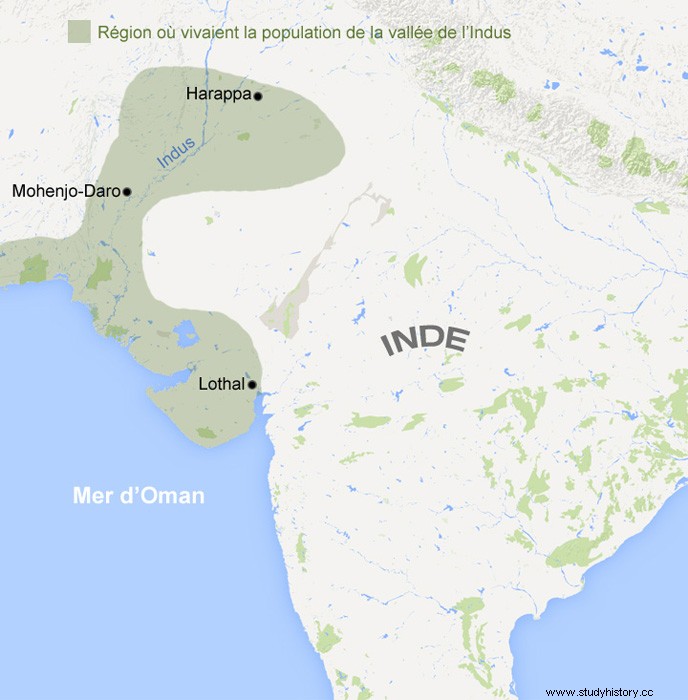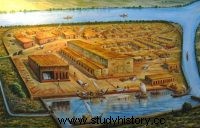
AROUND 3,500 B.C. J.-C.:Peasants settle in the Indus Valley (current Pakistan):
The land is fertile on the edge of the Indus . As in Egypt and Sumer, the river overflows every year and a complex and centralized organization is put in place to improve harvests.
First towns and beginning of trade:
Soon, all the peasants no longer needed to cultivate the land and some could devote themselves to other activities. They build cities , learn new trades and go into business. They probably trade with the Sumerians because their pottery and pearls have been found there. They also sold wood, cotton and spices.
AROUND 2,500 – 1,800 BC. J.-C.:The Indus Valley is at its peak:
The Indus Valley has a hundred towns and cities, the 2 most important of which are Mohenjo-Doro and Harappa which were discovered in 1921 and 1922 CE. Until 1920, historians thought that the beginnings of Indian civilization dated from the 6th century BC before discovering with surprise the existence, on the territory of present-day Pakistan, of a civilization as old as Egypt and Mesopotamia . Built according to a checkerboard plan, with strictly aligned rectangular housing blocks, streets 8 meters wide and perpendicular alleys equipped with very elaborate sewers which reveal a concern for hygiene of which one finds only a few. examples in the history of cities of the past, Mohenjo-Doro and Harappa are the oldest known testimonies of methodical town planning. The political and religious history of the Indus Civilization is still a mystery today as there were no temples, palaces or meeting places in the Indus cities. The mystery remains intact and still offers beautiful perspectives to archaeologists...
Taxes:
Peasants must give part of their harvest to the city.
Write:
Merchants write to note their sales and purchases of goods using a writing composed of 270 different signs. No one has yet been able to decipher the writing of the Indus Valley.

AROUND 1,700 B.C. J.-C.:The Indus civilization disappears:
Mohenjo-Doro suffers severe flooding and is ransacked by invaders . For unknown reasons that no one can explain, all the other cities are abandoned. The hypotheses proliferate:The peasants may have ruined their land by too intense cultivation and too much deforestation, quarrels between cities may have broken out or a disaster such as a flood may have occurred.
AROUND 1,500 B.C. J.-C.:Invasion of the Aryans:
The Indus region was invaded by nomads from Central Asia, the Aryans . Gradually, they are also spreading through northern India .
